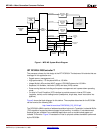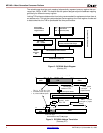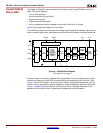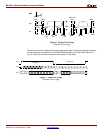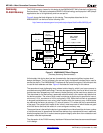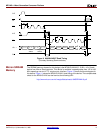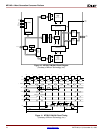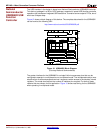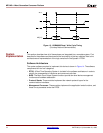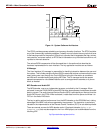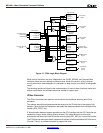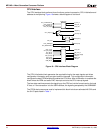
2 www.xilinx.com XAPP169 (v1.0) November 24, 1999
1-800-255-7778
MP3 NG: A Next Generation Consumer Platform
R
MP3 Technology
MP3 refers to the MPEG Layer 3 audio compression scheme that was defined as part of the
International Standards Organization (ISO) Moving Picture Experts Group (MPEG) audio/video
coding standard. MPEG-I defined three encoding schemes, referred to as Layer 1, Layer 2, and
Layer 3. Each of these schemes uses increasing sophisticated encoding techniques and gives
correspondingly better audio quality at a given bit rate. The three layers are hierarchical, in that
a Layer 3 decoder can decode Layer 1, 2, and 3 bitstreams; a Layer 2 decoder can decode
Layer 2, and 1 bitstreams; and a Layer 1 decoder can only decode Layer 1 bitstreams. Each of
the layers support decoding audio sampled at 48, 44.1, or 32 kHz. MPEG 2 uses the same
family of codecs but extends it by adding support for 24, 22.05, or 16 kHz sampling rates as well
as more audio channels for surround sound and multilingual applications.
All Layers use the same basic structure. The coding scheme can be described as "perceptual
noise shaping" or "perceptual subband / transform coding". The encoder analyzes the spectral
components of the audio signal by calculating a filterbank (transform) and applies a psycho-
acoustic model to estimate the just noticeable noise-level. In its quantization and coding stage,
the encoder tries to allocate the available number of data bits in a way to meet both the bitrate
and masking requirements. In plain English, the algorithm exploits the fact that loud sounds
mask out the listener’s ability to perceive quieter sounds in the same frequency range. The
encoder uses this property to remove information from the signal that would not be heard
anyway.
Like all of the MPEG compression technologies, the algorithms are designed so that the
decoder is much less complex. Its only task is to synthesize an audio signal out of the coded
spectral components. All Layers use the same analysis filter bank (polyphase with 32 sub-
bands). Layer 3 adds a MDCT transform to increase the frequency resolution.
All layers use the same header information in their bitstream to support the hierarchical
structure of the standard.
Solution
Overview
A key design objective for this application was the creation of a solution with the lowest possible
cost, while at the same time providing support for value added features. These features include
the ability to store contact information and record memos and other functions commonly found
in Personal Digital Assistants (PDAs).
Figure 1 gives an overview of the design. The key features of which are:
• 128 x 128 pixel graphical touch screen.
• USB interface for download music and network connectivity.
• IRDA compliant infrared interface for exchanging data with other units.
• 32 MB of on board FLASH storage.
• CompactFlash interface for storage expansion using CompactFlash cards or MicroDrive
hard drives.
All of this is driven by a high-performance IDT RC32364 32-bit RISC processor and interfaced
using a next generation Spartan-II FPGA. Before the functions implemented in the Spartan
device and the software function running on the RC32364 are examined, the following gives an
overview of the Application Specific Standard Products (ASSPs) that are included in the
design.





